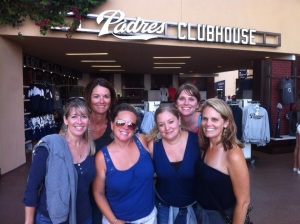Yeah, this is one of those year end reflection, new year, new beginning posts. Hey, it’s obligatory. Deal.
Since I came back to teaching just over three years ago, (we like to call it my eight year maternity leave), I have fallen madly in love with the practice, new curricular ideas, and especially the students all over again. 2014 saw some of my favorite times:
1. The GAFE Summit and my transformation to Google Fan Girl: This is a biggie. I have always been fairly keen on technology, but by no means an expert. This Google Apps for Educators conference blew my mind. I couldn’t get enough. My district asked me to be part of a group who facilitates trainings for other teachers throughout my district. I absolutely fell in love with teaching teachers. Educational technology via use in my classroom, as well as becoming a “connected” teacher, interacting with educators through social media and conferences (Truckee was awesome) has opened up a world for me that I could have never fathomed.
2. Student Blogging/Web Pages: One idea I took away from the GAFE Summit, among so many others, is getting students to blog. Although this has had its fair share of head-shaking moments, (see post) it has been amazing. We all know the best way to get good at anything is to do it over and over. Blogging gets kids to write, and most love it!
3. AVID in San Diego: My dad was an AVID teacher, so I always heard about this amazing program, but I’ve never been trained. Eight of us headed to San Diego for the Summer Institute. Wow. There is a reason this program has been around so long and has been successful for so many students. The material is empowering, and I had more fun than I ever imagined, especially with the group of people I am fortunate enough to work with each day. Read more here, if you’re feeling unfulfilled.
4. Acting like a Total Idiot: Some of my favorite moments from teaching didn’t involve teaching at all. They were “dancing” at rallies to choreographed numbers with my staff, joining my colleagues in dumping ice over our heads, dressing up for spirit days, strategically placing a cardboard cut out of my principal throughout the school, and even throwing down in a lip sync battle. These are the moments I truly love.
5. Falling in Love with 8th Grade: I’ve taught 8th grade in the past, but I had never felt as close to the students who graduated in June. I had a hard time saying goodbye. I imagine this year’s class will be no different. I don’t know if it’s the school and the kids or that I have somehow changed. It’s probably a bit of both. I absolutely love these kids, even on my worst days.
What’s on the list for 2015?
My true goal this year, (besides blog more), is to soak up as much as I possibly can. I just want to learn. I’m hoping to start my Master’s program in the fall, emphasizing educational technology. I want to attend as many workshops and conferences as possible, as well as keep active on social media with my professional learning community.
Of course, I also want to continue to feed my passions. I vow to savor the moments that are astounding and learn from my failures. I’m going to try new ideas, not caring if I execute perfectly. More importantly, I’m going to keep dancing. As my favorite musician, Frank Turner, sings,”It won’t last, so be bold, choose your path, show soul, live fast and die old.” This year, I will choose my path, fill it with all I’ve got, and teach bold.
